Building Relationships between Cities and Towns in China: The Emerging City System in Chongqing

DOI reference: 10.1080/13673882.2018.00001013
By Carolyn Cartier, University of Technology Sydney and Hu De, East China Normal University
Carolyn Cartier and Hu De, discuss China’s plan for national urbanization. Focusing on Chongqing, they reveal a pattern small city urbanization that is closely tied to local market economies.
:Introduction:
A new city in a new China
Among the many challenges of working on cities in China are changing urban definitions, streams of policies and plans, and even the creation of hundreds of new cities. The Chinese government has periodically changed the definition of urban places, based on population size and the built-up area, and aligned administrative divisions with cities, establishing new cities at the province, prefecture, and county levels of government. In 2014 the Chinese government released an unprecedented national urbanization plan, called the New-type Urbanization Plan (2014-2020). After three decades of rapid uneven development, this plan articulates a path to urbanization that promotes sustainable ‘people-oriented development’. All of these issues come together in the case of Chongqing, a former prefecture-level city in Sichuan province.
The government re-established Chongqing as a separate territory and new city’ at the province level in 1997, merging into the prefecture-level city that was Chongqing two other prefecture-level cities, Fuliang and Wanxian, and one prefecture, Qianjiang, creating an area comprised of multiple urban areas and a mountainous territory of rural and semi-rural counties. Figure 1. Chongqing is therefore similar to New York, New York, existing as both a city and the equivalent of a state in the U.S. system. The first international reports heralded Chongqing as ‘the largest city in the world’ because the population of the Chongqing administrative division is more than 30 million. However, with a land area (82,300 km2) twice the size of Switzerland (41,285 km2), it is not a city in any conventional sense. The government established Chongqing as an administrative city-region in relation to two large-scale developments: the reservoir area behind the Three Gorges Dam, and the ‘Open the West’ strategy (Hong, 2004). In this developmental context, Chongqing lies at the heart of a new urban system with medium and small cities governing multiple towns that anchor the urban hierarchy. This administrative complexity raises numerous questions about how meeting China’s plans for people-oriented development.
Figure 1: Geographical location of Chongqing in China (identified in red). Source. Puzhou Wu.

Past and Present in Urbanizing Chongqing
In China’s territorial-administrative system Chongqing is a provincial-level city and a city-system in formation, with 38 county-level administrative divisions governing 621 towns. Among the 38 county-level divisions, 26 are now city districts. However, the former county as district is not an urban district in the conventional sense. In general terms, urban districts in China are usually the units of partition and subdivisions of a city at prefecture-level or higher and are highly urbanized areas. A county or a county-level city normally has extensive rural land and an urban area, which is usually the seat of the county government and itself constitutes a small city. Outside these small or medium-sized cities, towns punctuate a still rural landscape. When a county or a county-level city is re-territorialized as a district, it is governed by the city and becomes equivalent administratively to districts in the urban core. But, with their rural conditions, these areas can be very different from urban districts in the city center. In the administrative system these new city districts with rural areas form key links in the Chongqing city system in formation and govern the development of multiple towns.
Figure 2: Administrative map of Chongqing Towns. Source. Puzhou Wu.
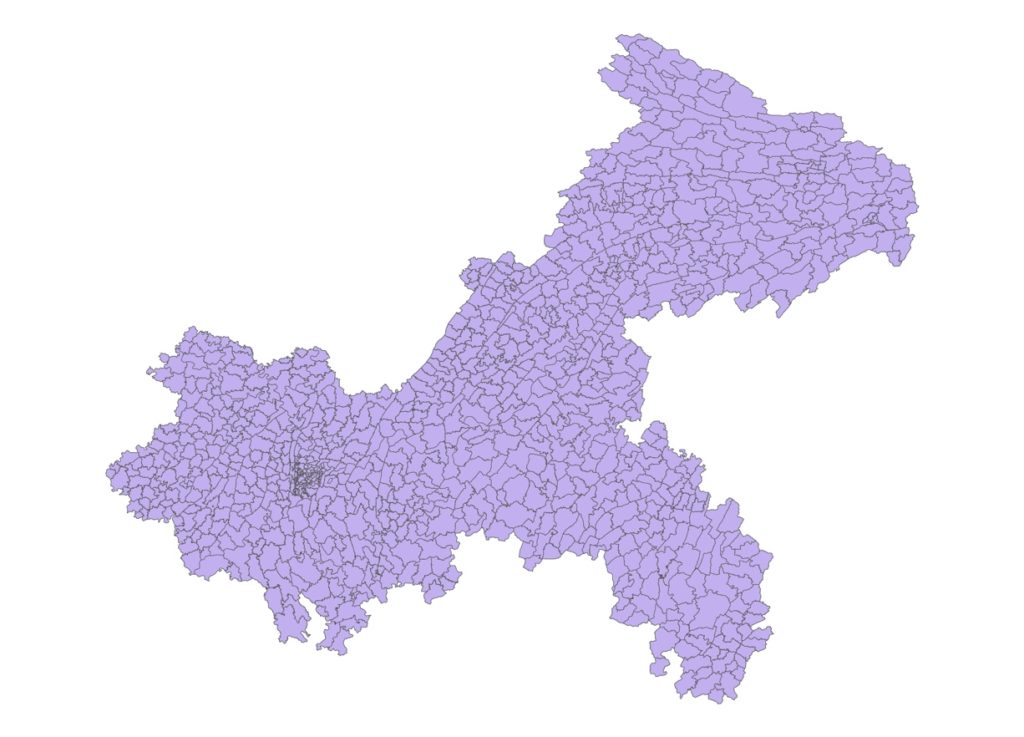
Based on new fieldwork, our research examines the situation of towns in this ongoing process of urbanization. In the New-type Urbanization Plan (NTUP), ‘new’ refers to chengzhen hua, literally ‘city-town-ization’, which indicates the urbanization of towns and the administrative relationship between small cities and towns. The NTUP turns away from the excessive emphasis on big cities in previous plans, to develop the concept of ‘people-centered urbanization’ and comprehensive development for all urban areas. It places new emphasis on towns, because towns are the supportive foundation for the rural economy across China. This research therefore assesses the role of the state in promoting the sustainable development of towns and ‘market towns’, which are a historic feature of the rural economy in China.
In April 2018 we conducted a field investigation in Tongliang district, a characteristic former county of Chongqing. Figure 3. Tongliang and its larger surrounding area are a part of the historic agricultural economy of the Sichuan basin. Market towns especially in Sichuan are a focus of renowned twentieth-century scholarship on location theory in China. In the 1960s and 1970s G. William Skinner (1965) famously applied central place theory to Sichuan towns to demonstrate their significance as the basis of a networked urban system. Based on the assumptions of location theory and urban and regional systems theory, he postulated that they would decline with the development of industrial transportation networks. Thus our investigation also aims to reassess these historic predictions and asks how markets and market towns have fared in Tongliang.
Figure 3: Chongqing and geographical locations of Tongliang (identified in blue). Source. Puzhou Wu.
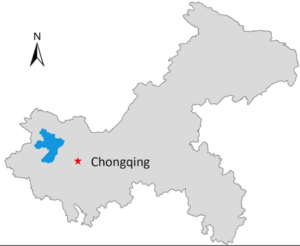
In the local language, Tongliang refers to four mountains northwest of Chongqing, on the edge of the Sichuan arc-fold belt. Figure 4. The geological formation is characterized by narrow steep anticlines and wide gentle synclines. In the twentieth century, its location made it a day’s journey from Chongqing city. The construction of tunnels and a network of expressways, in the 2000s, brought Tongliang within the two-hour transport circle of the Chongqing urban core. Tongliang is now an urbanizing center of industrial zones, high-rise housing, and service industries. In 2014 it became a city district, one of the meso-scale governments, between Chongqing and the other 621 towns, guiding the city-town-ization that will shape the future of rural China.
Figure 4: Satellite photograph of Tongliang. Source: Authors, based on Google Earth imagery.
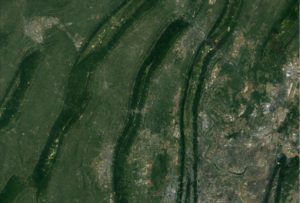
Towns in Tongliang
The Chongqing city system positions urban districts to administer the city-town relationship. The dynamics of these relationships occur in a variety of contexts and configurations. We examined it through territorial urbanization, market towns, and people’s livelihoods. Territorial urbanization is the process through which the party-state governs the territorial-administrative system to establish, expand, and develop cities (Cartier, 2015). Towns relatively close to city districts are subject to incorporation, but this is not taking place on the basis of urban growth per se or in relation to the notion of the urban growth boundary. In 2014 and 2015 Chongqing changed the status of two towns close to Tongliang, Pulü and Jiuxian, into sub-districts. Figure 5. Towns that form a sub-district retain their fiscal revenue and provide rural development, while the sub-district forwards its revenue to the city district (Tongliang) and is incorporated into its plan. Visible in the satellite image, the area between the small city and the former town undergoes development subsequent to the town becoming part of Tongliang district. In this process of territorial urbanization, the state governs multiple aspects of the administrative territory to prepare it for expansion.
Figure 5: Satellite photograph of the spatial expansion of Tongliang district. Source: Authors, based on Google Earth imagery.

The fieldwork was organized to take place during a 10-day market cycle. For example, within a 10-day period a given market may be on a 3-6-9 schedule and thus the market will be open on the 3rd, 6th, and 9th day of the month, followed by the 10th, 13th, and 16th day and so on. Tongliang has 43 scheduled markets. Figure 6. During the 10-day cycle we observed more than 20 markets, compared old and new market sites, asked sellers about their historical activity, and met with officials from town governments in seven towns, north, south, east, and west of Tongliang city. Empirical information from market site visits and town governments was triangulated with government documents and statistics where available. In the process we had to jettison an initial hypothesis, that historic changes to the administrative divisions through, for example, merging historic villages into towns, and merging towns to create larger town governing areas, would negatively impact the number of markets. Not only did the number of markets and towns with markets not change since the 1980s, when China opened to the world economy after the Mao era, but the total number of markets has decreased by only one since 1948. That mid-century datum, 1948, when the former government of China published a major statistical work on the rural economy, was the basis for Skinner’s central place argument that the number of markets would decrease with industrial modernization.
Scholarship on the history of urbanization documents the growth of large cities with the consequent decline of small towns. China too is experiencing substantial outmigration from rural areas as working-age populations seek opportunities in cities. Yet, central place theory has lacked predictive force in China. Why is this the case? What explains the continuity in market numbers and market towns? Firstly, the Chinese government maintains a historical commitment to rural development and what is called rural construction. Secondly, town governments prioritize support for markets in local development policy, which aligns with the priorities of the NTUP. Thirdly, markets are still very important for the everyday life of town residents and peasants in the villages. Towns are the socio-economic interface of exchange, from buying and selling farm products and agricultural and household items, to gaining sources of information and opportunities.
Figure 6: Markets and Market Dates, Tongliang District, 2016. Source. Zong Ruoyu.
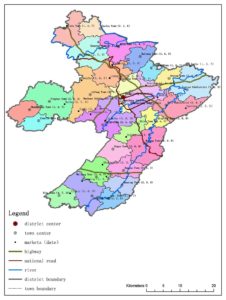
Rural markets were officially reestablished in 1984 and came under authority of the Industrial and Commercial Administration Bureau. Between 1990 and 2005 five new markets opened in Tongliang amounting to a total of 43. The Revised Tongliang County Gazetteer lists 44 markets in 1948, among which 34 have the same names and locations as the contemporary markets. The Industrial and Commercial Bureau was responsible for economic data on markets in addition to market sites and construction of new market spaces. Then from 1999–2003 the Bureau discontinued and transferred its responsibility for market spaces to town governments. Its final reporting on market transactions paralleled the national policy of tax reform in the rural sector, in 2000, to ‘relieve the peasants’ burdens. After taxes were rescinded, large numbers of new sellers literally entered the market. Most attend a circuit of markets, extending their range and turning marketing into a full-time small-scale business activity. Construction of the modern road system in Chongqing, instead of leading to decline in numbers of markets, supports an economic landscape of new mobilities.
The emphasis of the NTUP on the role of towns in promoting the people’s livelihood makes markets a focus of state administration. All parties or residents, sellers, and officials report that markets are not as crowded as they were in the 1990s, before substantial outmigration, but markets are still prosperous because per capita spending has increased. Households have more to spend. Figure 7 and Figure 8. Local Party and government leaders agree that commercial development in towns continues to depend on the traditional market. The market has therefore become a focus of town administration and is high on the agenda of Party work, because market days make for substantially increased commercial trade in towns. As one official stated, “if the Party secretary of a town cannot manage its market well, the leadership cannot do its work.”
Figure 7: Selling seedlings at market, Damiao town (2018). Source: Carolyn Cartier.
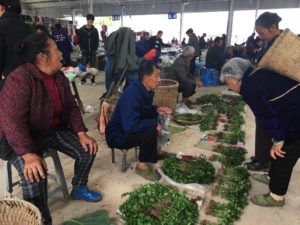
Figure 8: Daily necessities market in Lüfeng town (2018). Source: Carolyn Cartier.
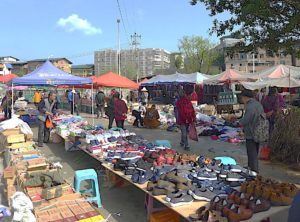
The NTUP strives to make urbanization more people-oriented by extending public services, promoting sustainability, limiting arable land conversion, and remediating uneven development. Government leaders of several towns report, for example, they cannot convert land for a parking lot, or for any other construction use, without higher-level land use permission. This has led to a new construction trend in ‘eco-parking’, in which tree-lined parking lots are developed to satisfy the conditions for the arable land requirement that each jurisdiction is bound to maintain. Town administration has also changed since the 1990s, when the priority was growth and income generation. Beginning in the 2000s, in association with the elimination of rural fees and agricultural taxes, town officials became increasingly responsible for implementing top-down orders to improve local livelihoods. This includes the implementation of the ‘minimum living standard guarantee program’ that was introduced in 1999. Until 2007, there were many times more urban recipients under the program, but now the majority of recipients are in rural areas (Luo and Sicular, 2013).
Conclusions
China is seeking to shift from a pattern of rapid development based on the conversion of arable land to support sustainable urban development in small cities and towns. A focus on towns is a key element of the development of the city system in which the government seeks to distribute the population and bring urban standards of living to rural areas. At the heart of this effort, the periodic market is an important socio-economic resource. The state is supporting the existence of these periodic markets even where towns have become sub-districts of small cities in an ongoing process that maintains connections between household farms and evolving cities. Through the development of towns the government is demonstrating a renewed commitment to the rural economy, continuing elements of socialism, while promoting the market economy and seeking to address local and regional inequality.
The party-state system governs territorially through the administrative areas of cities and towns, and the formation of the Chongqing city-region demonstrates the state’s capacity to change administrative divisions in order to drive urban development. Changing the administrative divisions to entrain urbanization is also taking place at the town level, where city districts convert nearby towns to sub-districts to amalgamate their budgetary capacity and plan their development. Though the focus of urbanization has shifted away from rapid land development, the state is continuing to expand small cities through incorporation of town areas. Changes to administrative divisions generally precede and interrelate with economic reforms while producing new configurations of territorial administration in the process of extending the space of urban governance.
The NTUP is supporting a new round of urbanization in China. The NTUP is not a roadmap for local governments, but a blueprint and guideline for achievement of better quality urbanization. The plan is new in its affirmation and promotion of the development of small cities, slower urban growth, and renewed support for towns. However, these comprehensive goals and corresponding measures may vary greatly in different areas and at different scales. From the perspective of urban planning and development, improving the service functions of towns, speeding up the development of small and medium-sized cities, and optimizing the size and structure of city systems are at the core of the NTUP. A distinctive feature of this wave of state-planned urbanization is that it seeks to integrate with the local economy rather than replace it, while continuing to promote rebalancing of the general economy through urban development for household consumption. Tongliang, Chongqing is building new city-town connections through changes to administrative divisions and institutional arrangements, and a new type of urban-rural relationship through improvement of the urban functions of the traditional market towns. These two processes demonstrate the NTUP in local practice and the emergence of new approaches to city system development.
Acknowledgements
A Regional Studies Association Member Grant contributed to funding research for this project. Locator map from Wikimedia Commons; town maps by Puzhou Wu, Tongliang district map by Zong Ruoyu satellite photographs from Google Earth, and photographs by Carolyn Cartier.
Funding
Fieldwork for this paper is funded by a Regional Studies Association Member Grant and Australian Research Council Discovery Projects, DP170100871.
References
Cartier, Carolyn. 2015. ‘Territorial Urbanization and the Party-state in China’, Territory, Politics, Governance 3, no. 3: 294–320.
Hong, Lijian. 2004. ‘Chongqing: Opportunities and Risks,’ The China Quarterly no. 178: 448-466.
Luo, Chuliang and Sicular, Terry. 2013. ‘Inequality and Poverty in Rural China’ in Rising Inequality in China: Challenges to a Harmonious Society, eds. Li Shi, Hiroshi Sato, and Terry Sicular, Cambridge University Press, 197–229.
Skinner, G. William. 1965. ‘Marketing and Social Structure in Rural China, Part II’, The Journal of Asian Studies 24, no. 1: (1965): 195–228.
About Carolyn Cartier and Hu De
Carolyn Cartier is a professor of human geography and China studies at the University of Technology Sydney. She is the chief investigator of the Australian Research Council project, ‘Governing the City in China: The Territorial Imperative’, and a member of the Regional Studies Association.
Hu De is a lecturer of urban and regional science school at East China Normal University in Shanghai. He is a partner investigator of the Australian Research Council project, ‘Governing the City in China: The Territorial Imperative’.